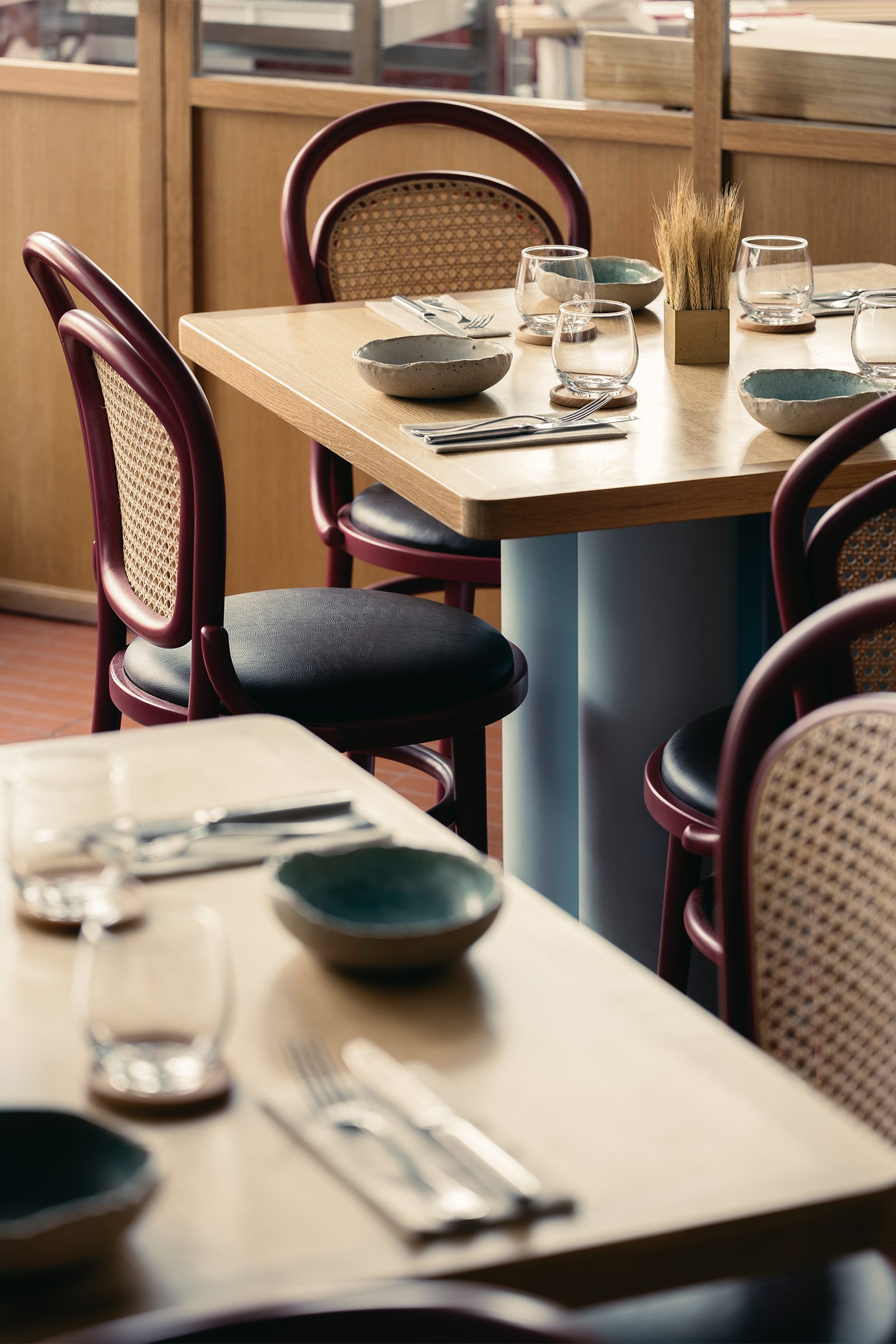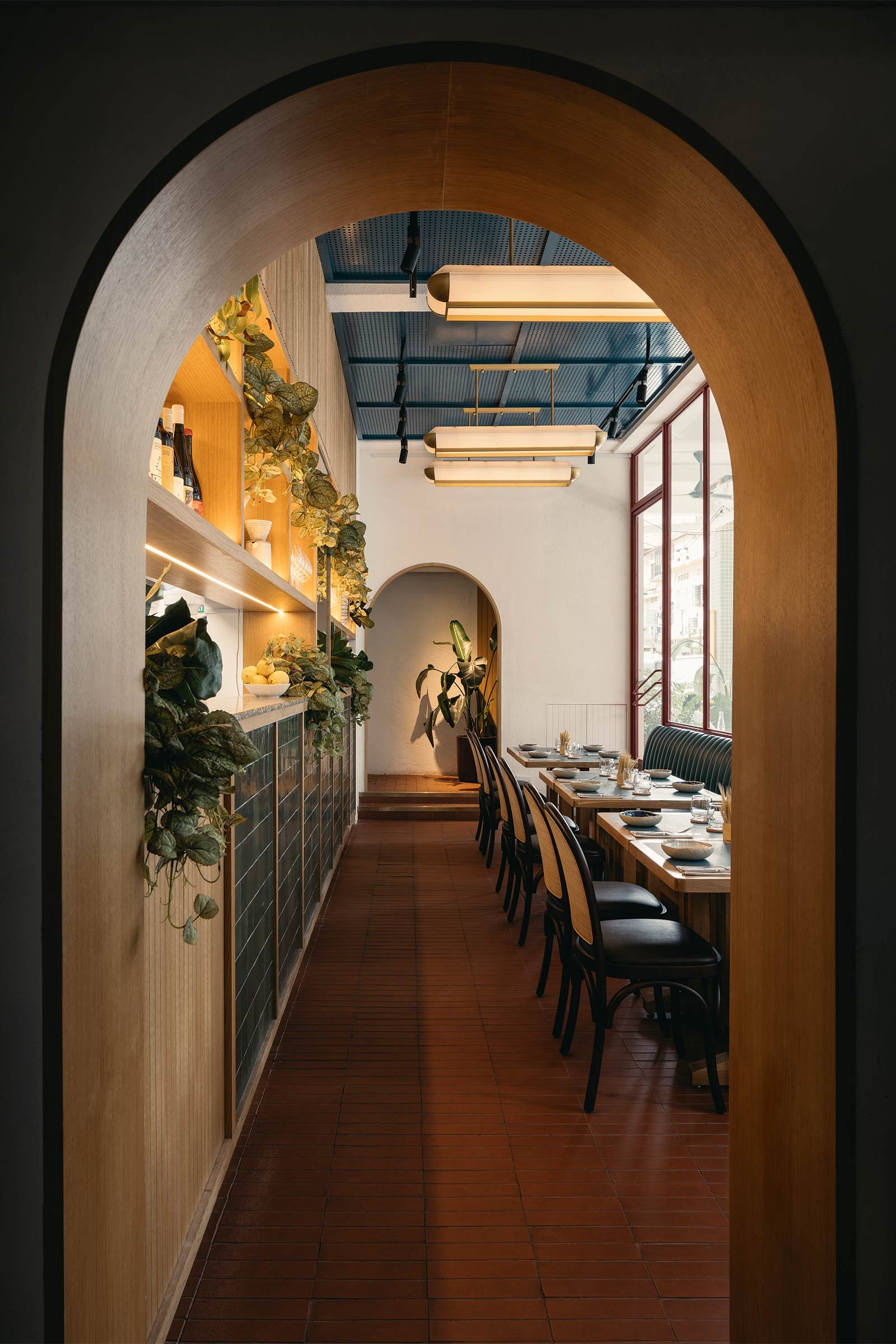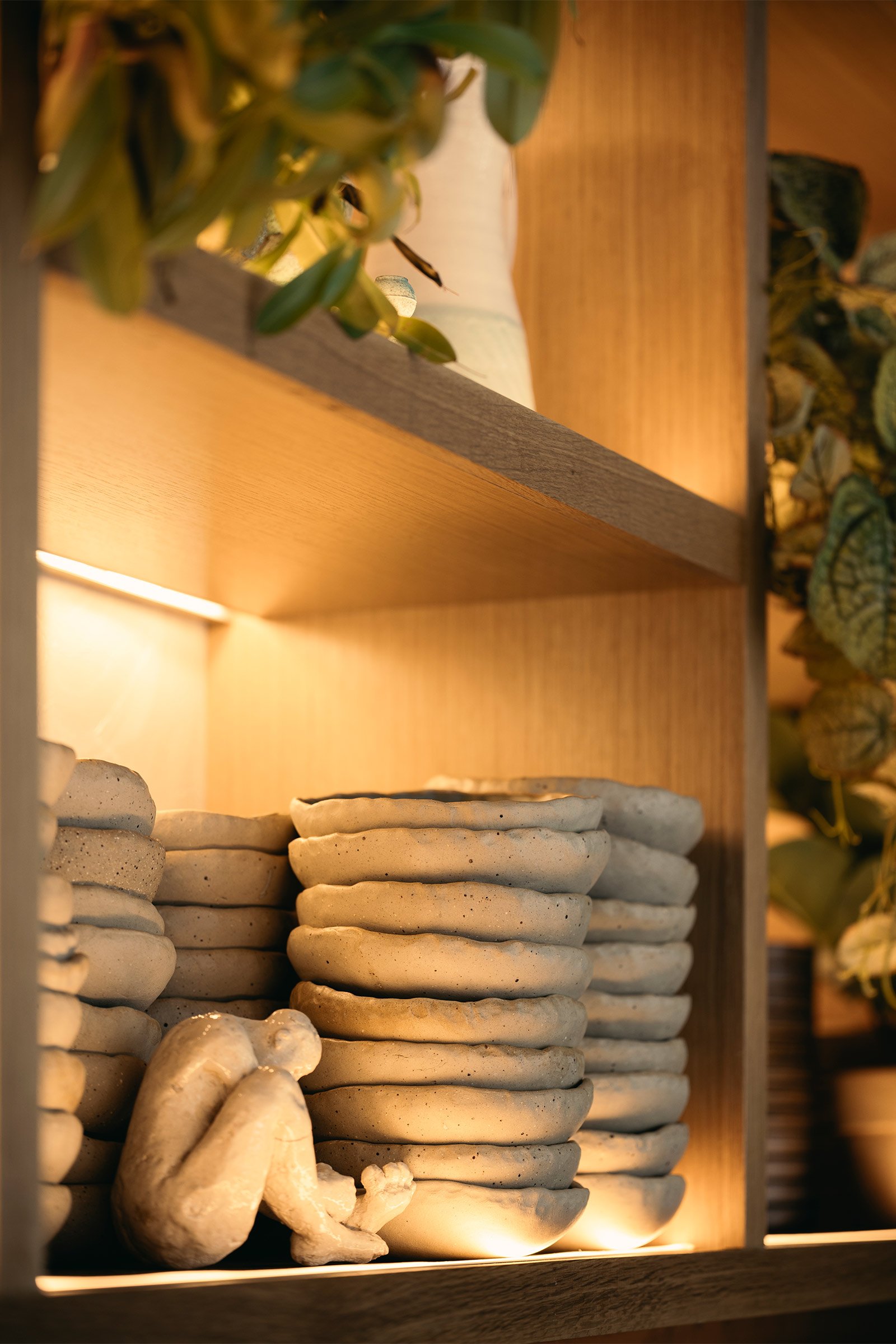In Fine Form

The Cicheti Group and artisanal pasta makers Ben Fatto come together to open Forma, an elevated neighbourhood trattoria designed by Takenouchi Webb that blends Singaporean and Italian references
Pasta restaurants are dime a dozen in Singapore but newly opened trattoria Forma still commands a long waiting list. The main draw is Yum Hwa Lee of Ben Fatto fame, known for his fresh pasta, who seeks to present traditional dishes true to their origins. Not to be outdone though, the restaurant’s interior design helps bring Lee’s quest to life.
Located in a corner shophouse in the charming Joo Chiat neighbourhood, the trattoria’s setting was crafted by Singapore-based studio Takenouchi Webb. Arriving at Forma’s doorstep, guests are immediately given a glimpse into the tactility of pasta making: an open production kitchen abuts the five-foot way, putting the pasta makers and their creations on full display. ‘We brought it out in front as the intention was to weave Forma into the cultural fabric of the neighbourhood,’ says studio co-founder Marc Webb.
This desire to tie in with the locale is also articulated in the restaurant’s design, which melds elements of Singapore and Italy. The bold interplay of reds, greens and blues is inspired by traditional trattorias, expressed in the marble countertops, banquette seats, mullions and perforated ceilings. Bespoke wall and pendant lamps bear classical geometric shapes with brass accents.
The local influence comes through in the custom-made bentwood chairs with rattan backrests, outdoor cane furniture and terracotta floor tiles that run through to the exterior, mingling with ceramic tiles of varying shapes and finishes. ‘There’s a sort of roughness to the clay, lending a handmade quality to the space, much like the art of pasta making,’ Webb explains. The rugged character is further accentuated by the exposed original brick walls and abstract artworks by Malaysian artist Fauzulyusri.
Since the footprint is narrow and even tight in certain areas, Webb and partner Naoko Takenouchi astutely created pockets of dining zones, each space offering their own guest experience. For instance, while the seating area at the back of the restaurant may be separate from the pasta making and the bar, the duo opened up a sliver of the kitchen that faces the seats. This detail not only acts as the kitchen pass but draws guests into the action. All in all, these compact dining areas bring out the comfort and warmth of a traditional trattoria, staying true to the commensality found in Italian and Singaporean culture.
Today, pasta has made its way across the globe, connecting people in many ways. And Webb hopes that it will continue to do the same at Forma. ‘We’re hopeful that the open nature of the restaurant will engage with the residents, from curious onlookers to regulars, catalysing the growth of new businesses in the precinct.
Text / Joseph Koh
Images / Studio Periphery
























